Meticulously detailed London mews house unveiled by Ampuero Yutronic
Market Mews, a London mews house, is a hymn to modern minimalism, executed with precision and skill to make the most of a tight site in the heart of the capital
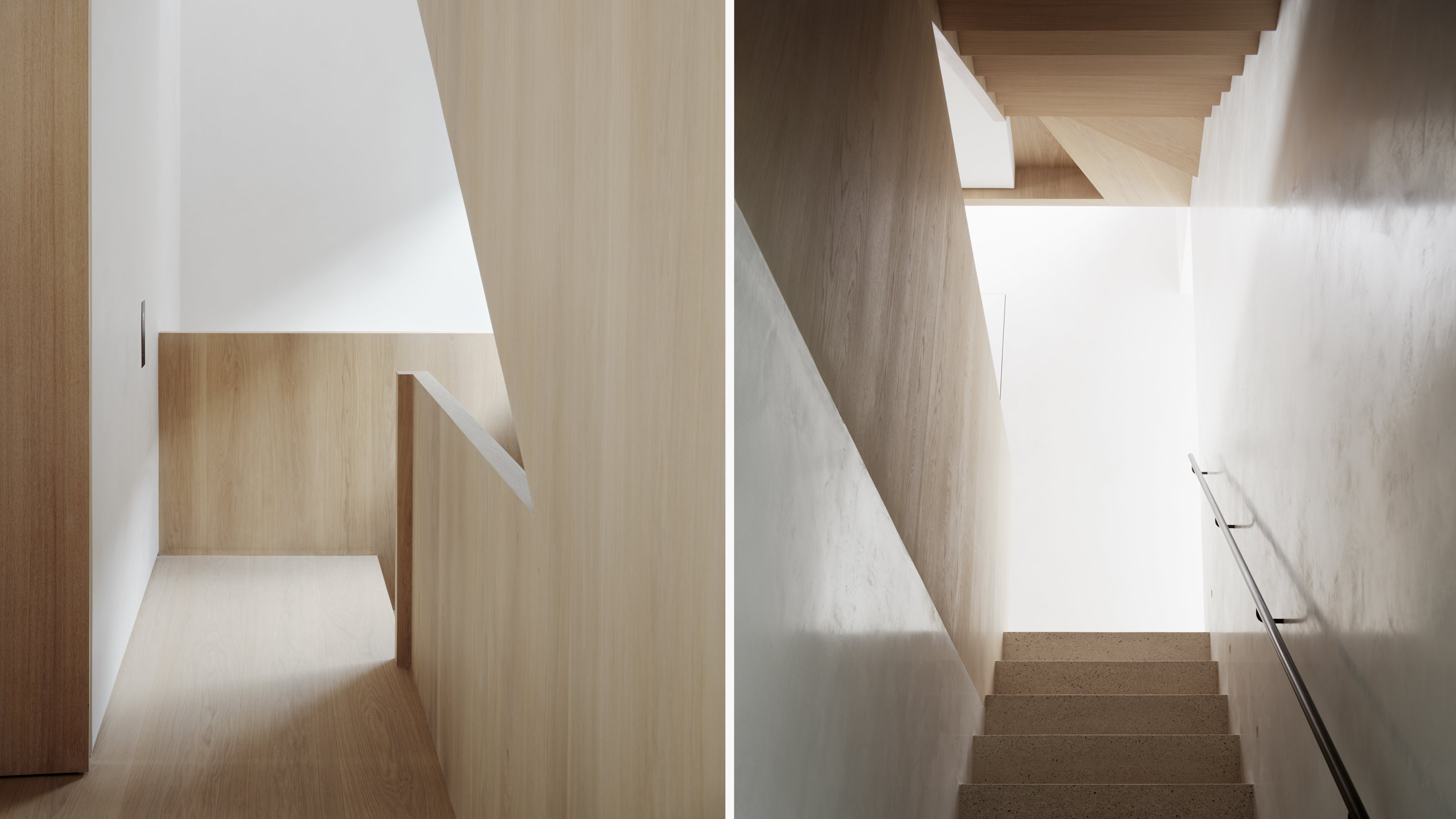
Whether it’s a grand townhouse or a modest London mews house, Mayfair conceals its architectural secrets behind well-preserved historic façades – which have, today, almost all been given over to private accommodation. Market Mews is one such structure, a new-build house replacing a post-war building located in one of the cobbled backstreets that were once the working heart of what has long been London’s most sought-after residential district.
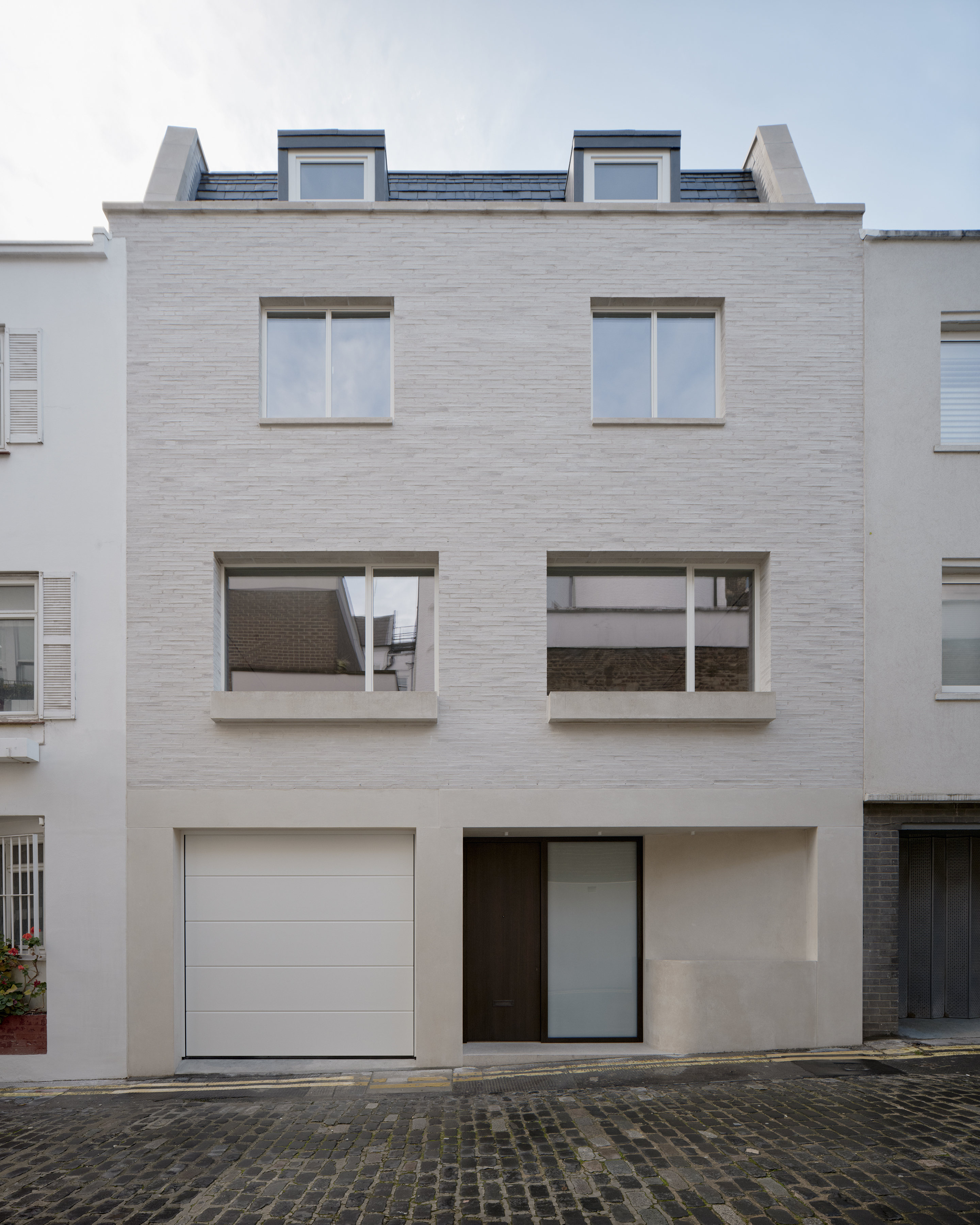
The new façade at Ampuero Yutronic's Market Mews house
A radically overhauled London mews house
Designed by London- and Chile-based architecture and design studio Ampuero Yutronic, the radically overhauled mews house is a rich evocation of late 20th-century minimalist architecture, filtered through modern sensibilities and desires for simplicity, sustainability and ease of use. Whereas the trailblazers of architectural minimalism were ascetic at the very least and almost monastic at times, the Market Mews house is nothing if not luxurious.
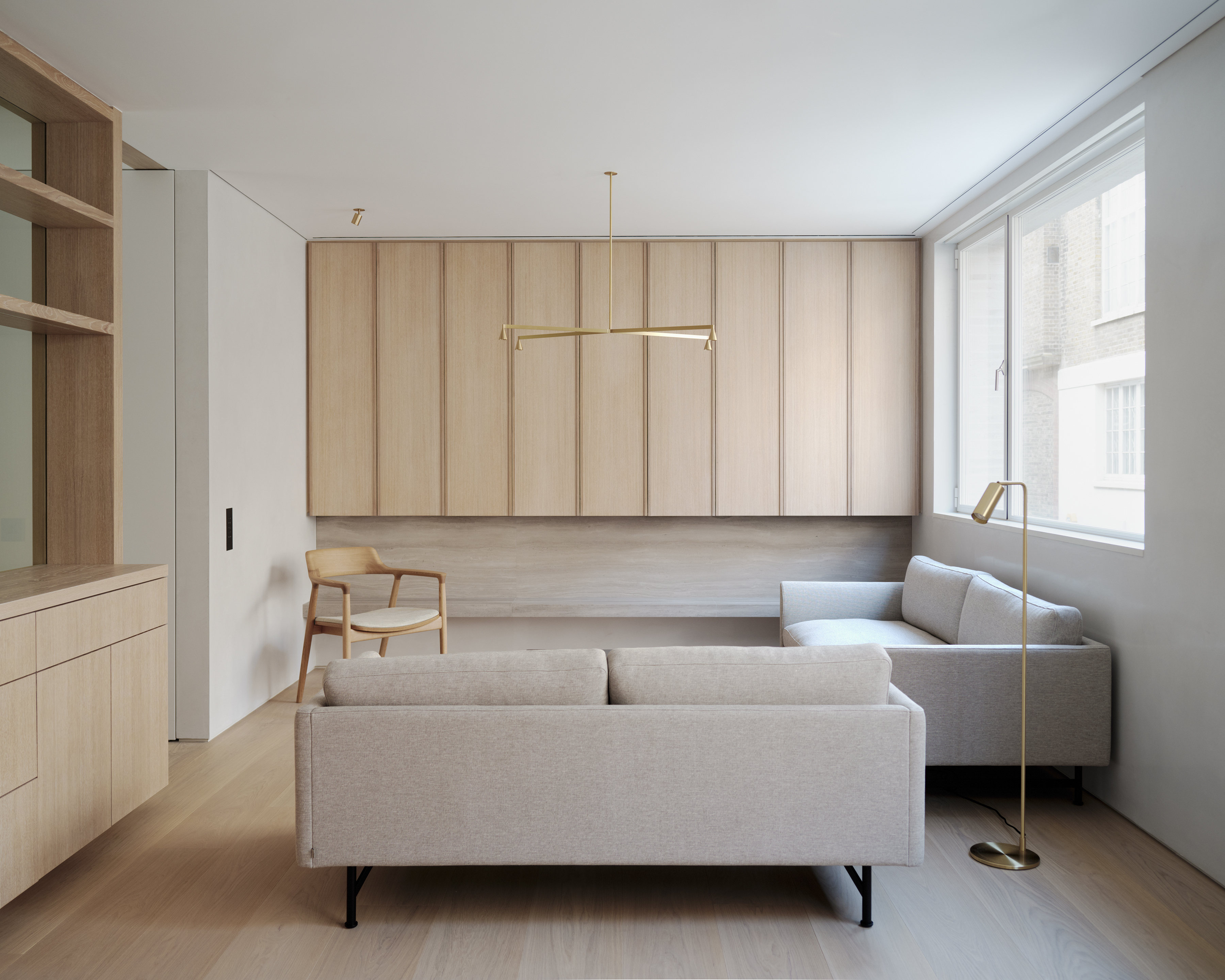
Interiors are characterised by minimalism and exceptional craft
That’s not just down to the location. Intended as both a ‘calm retreat’ and a place to entertain extended family, the house is hemmed in by three surrounding properties. The north-facing mews façade is the only new external architectural expression, and the requirements of the local Conservation Area meant that a sympathetic and restrained approach was needed.
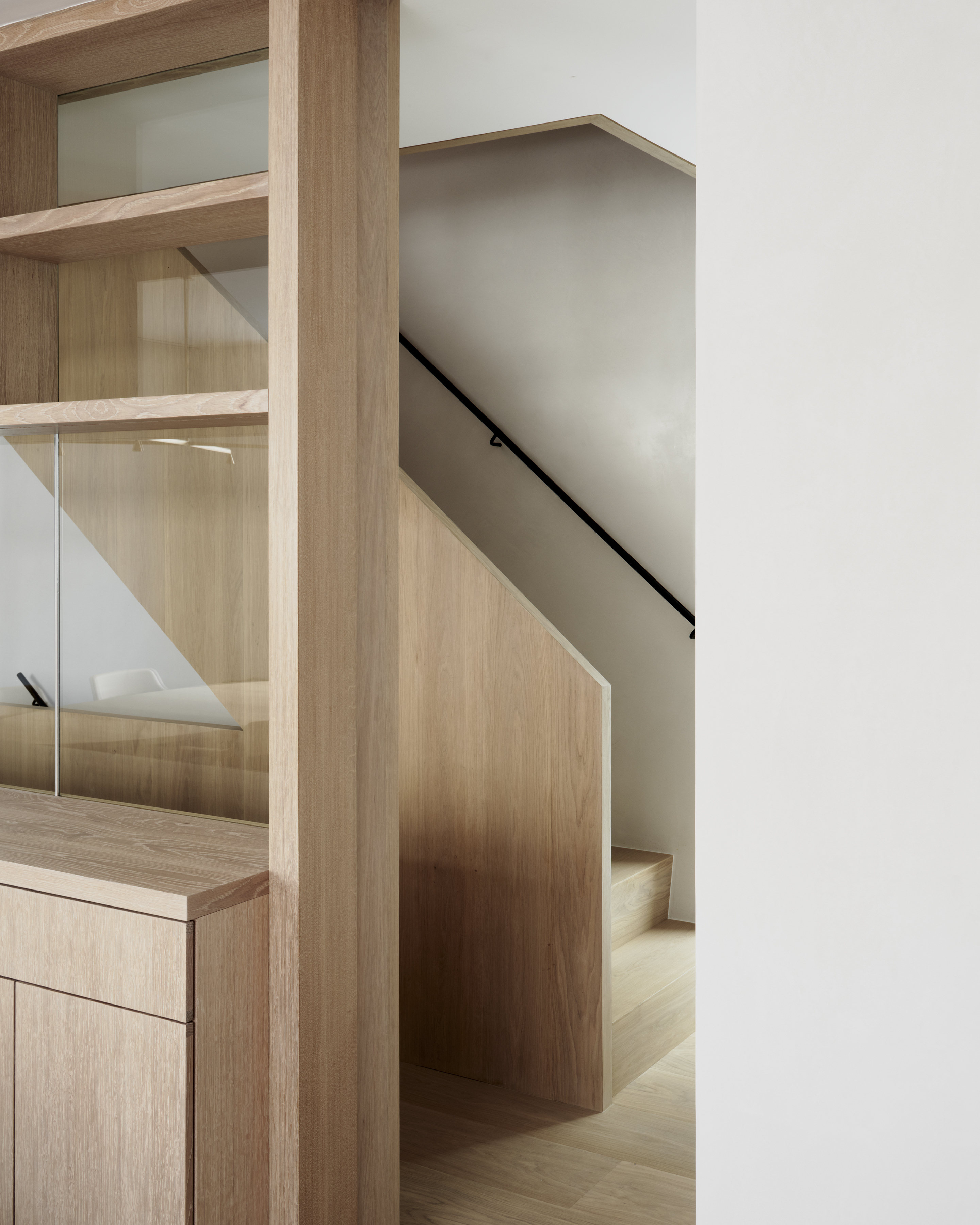
Built-in joinery defines the spaces
The façade ‘takes its cues from the historic residential typologies of central London’, the architects say, adding that it also creates a ‘distinct identity/appearance through pared-back detailing and use of materials’. A mix of large-scale reconstituted limestone panels on the ground floor and slender limestone-coloured ‘roman’-style bricks and lime mortar on the floors above gives the house a solidity and sense of history. The upper level is a more traditional mansard roof, set back behind the parapet.
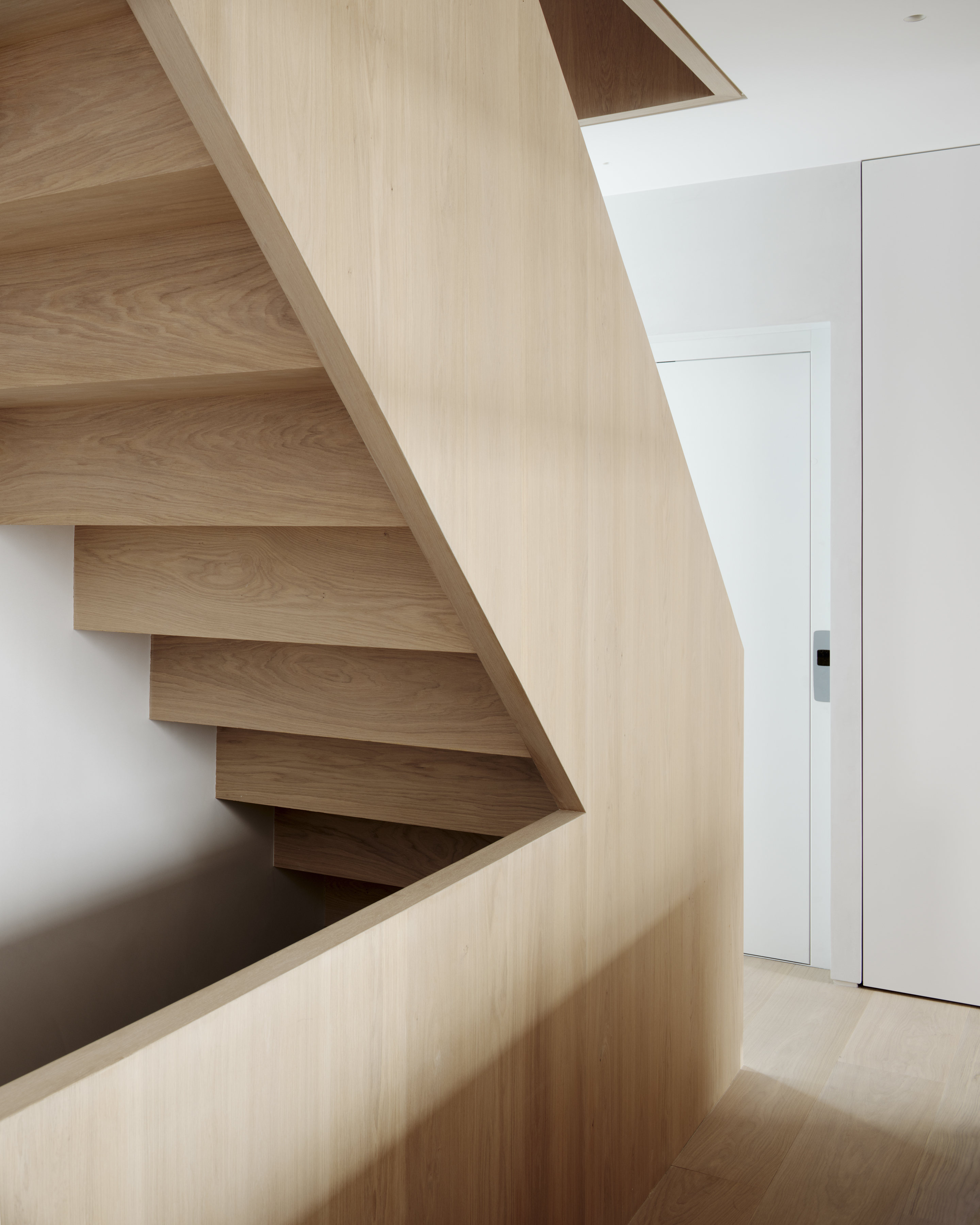
The staircase at the heart of the house
Inside, the house is arranged around a series of large light wells that bring natural daylight down into the heart of the enclosed plan, which spans five storeys. Using both rooflights and high-level south-facing windows, the architects have created a dreamy interior landscape of abstract forms, minimal joinery and stonework and sculptural light fittings.
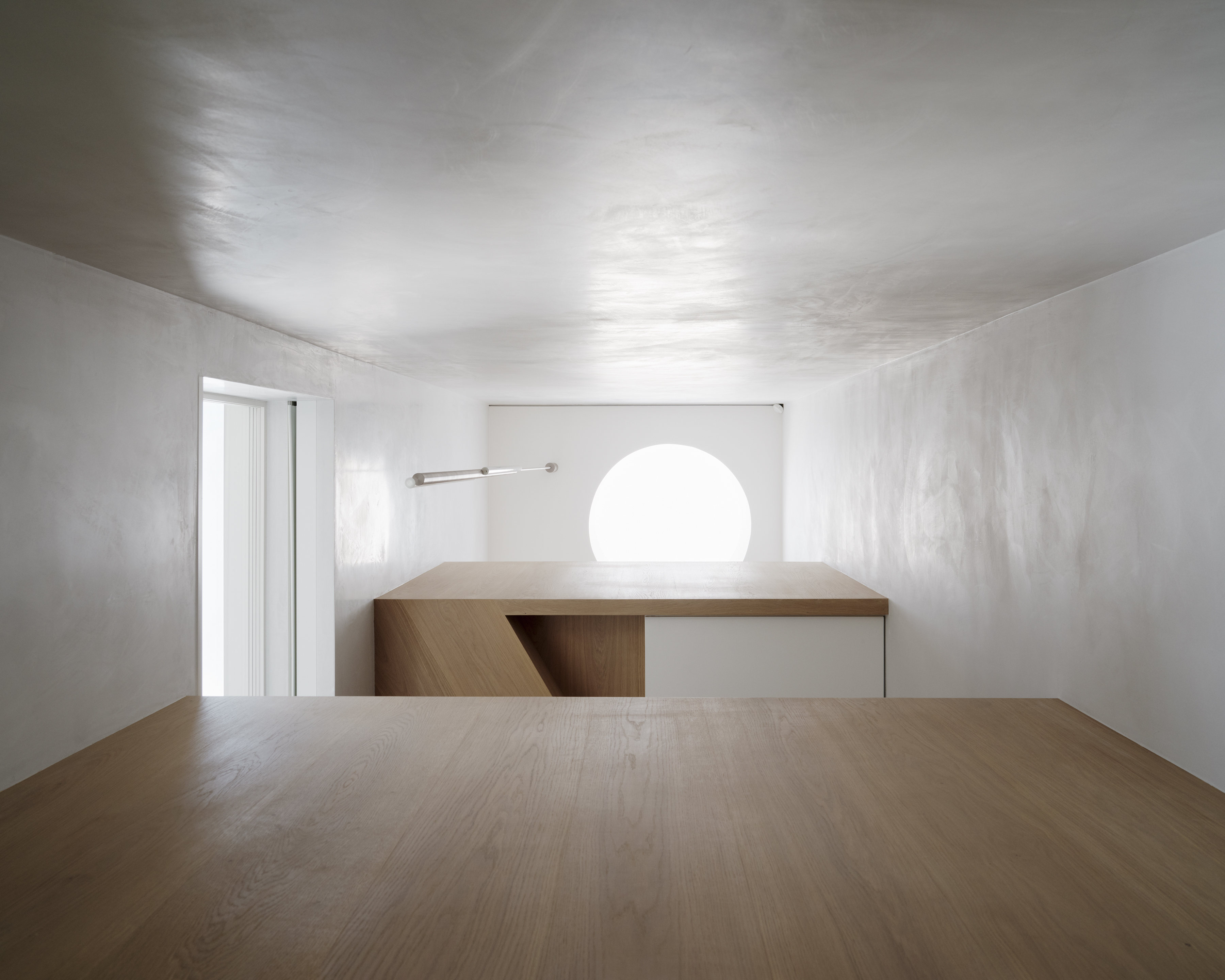
Looking up the three-storey internal lightwell
From the entrance, one becomes immediately aware of this cascading internal light feature, as illumination from the three-storey-high lightwell at the rear of the house is felt on every level. The first floor is a formal open-plan living and dining area, in common with the traditional ‘piano nobile’. Joinery is bespoke and integral to the architectural structure and flow of the house.
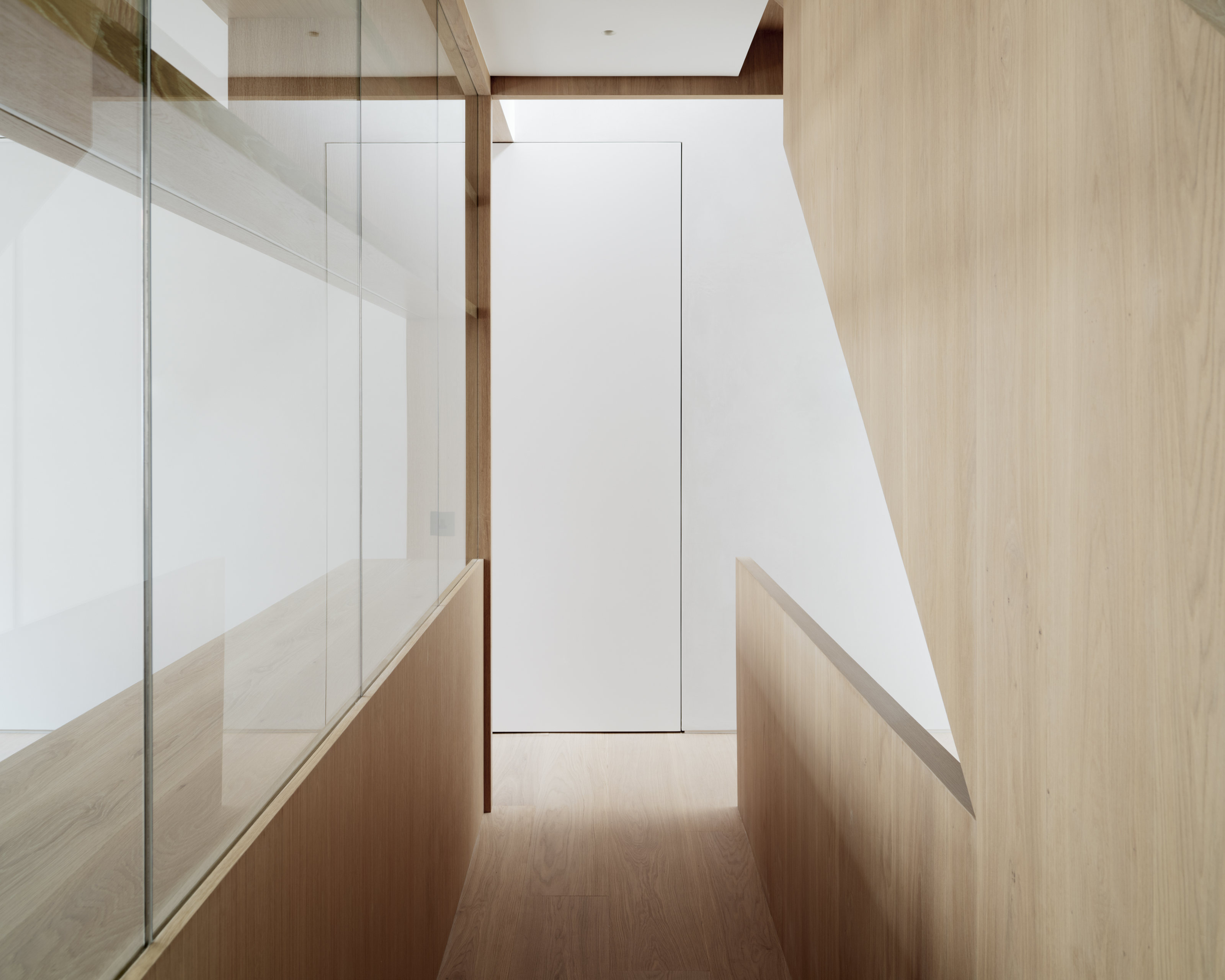
Market Mews by Ampuero Yutronic
Nowhere is this more evident than in the wooden staircase that winds through the heart of the house. The thick balustrades and risers are made with meticulous craftsmanship, also demonstrated by the free-standing stone bathtub in the primary bedroom suite. Exposed concrete walls are also deployed for additional texture on the basement stair, which leads down to the cinema room and a top-lit multi-use space.
Receive our daily digest of inspiration, escapism and design stories from around the world direct to your inbox.
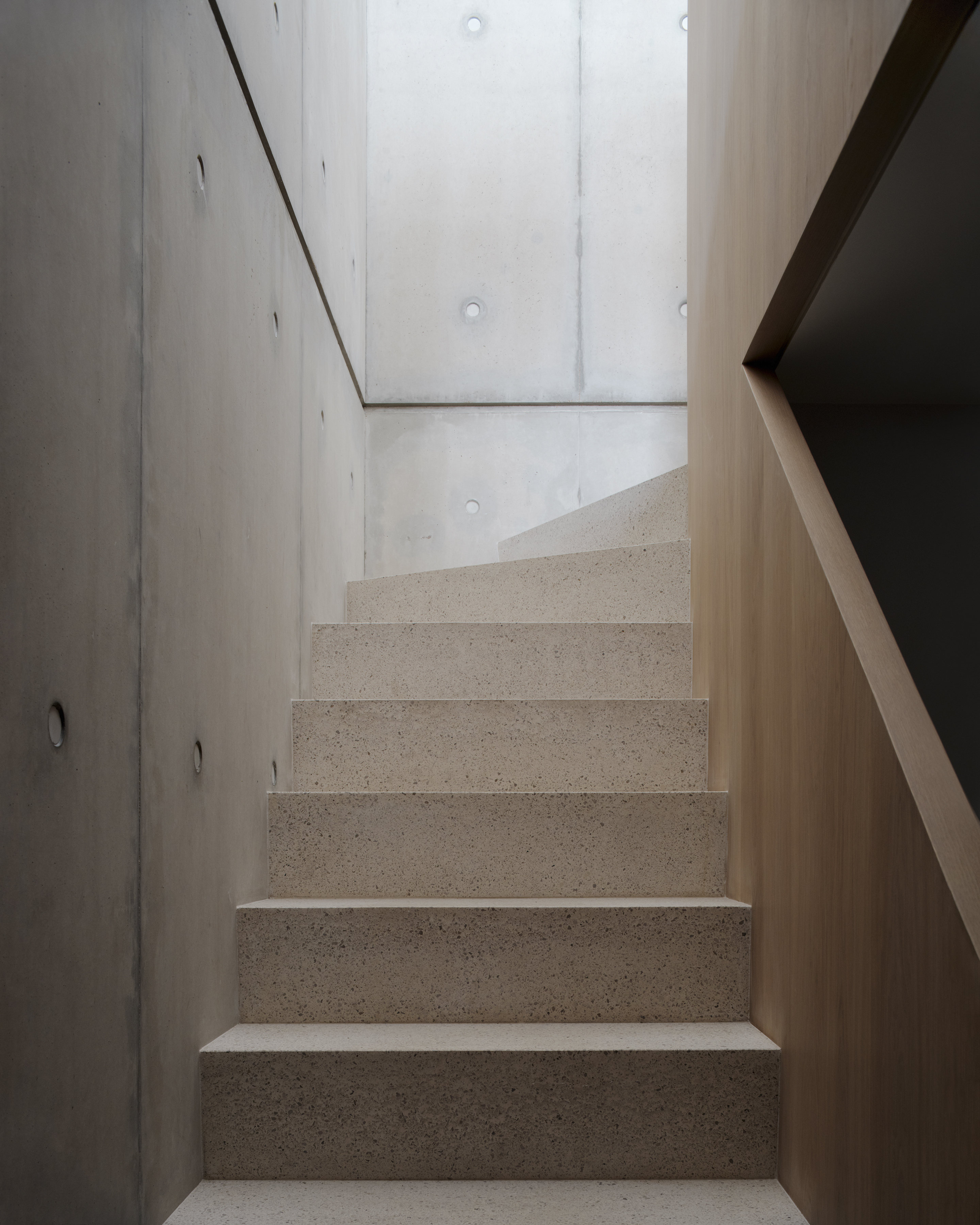
The basement staircase features exposed raw concrete
‘A key objective for the client was to live in a tranquil atmosphere that feels clean, light and spacious but is also suitably robust, as required in a family home,’ say Javier Ampuero Ernst and Catalina Yutronic. ‘The predominant use of wood, stone and polished marble plaster, combined with simple detailing, contributes to the achieve an overall calmness and understated elegance.’
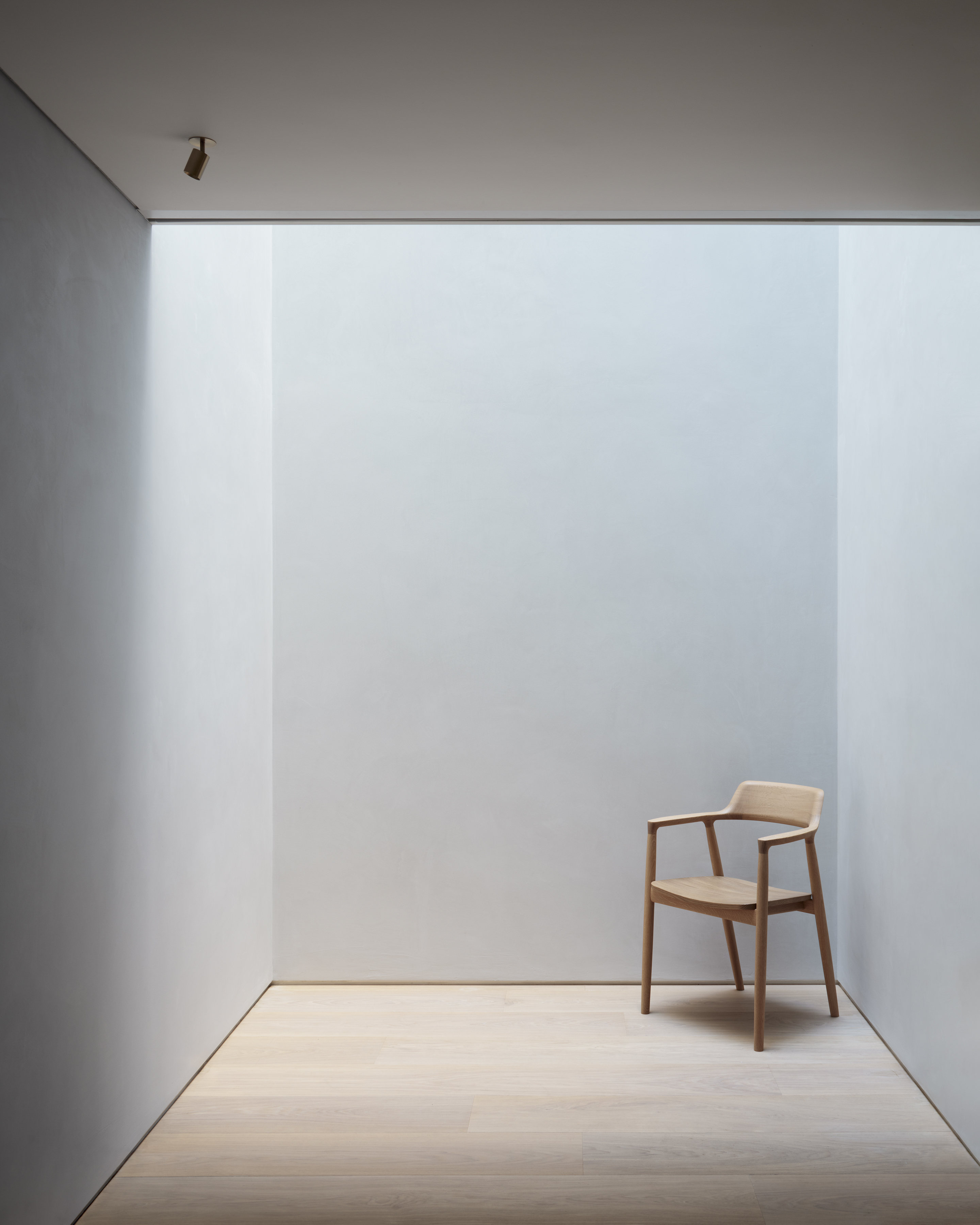
The house is a modern interpretation of minimalism
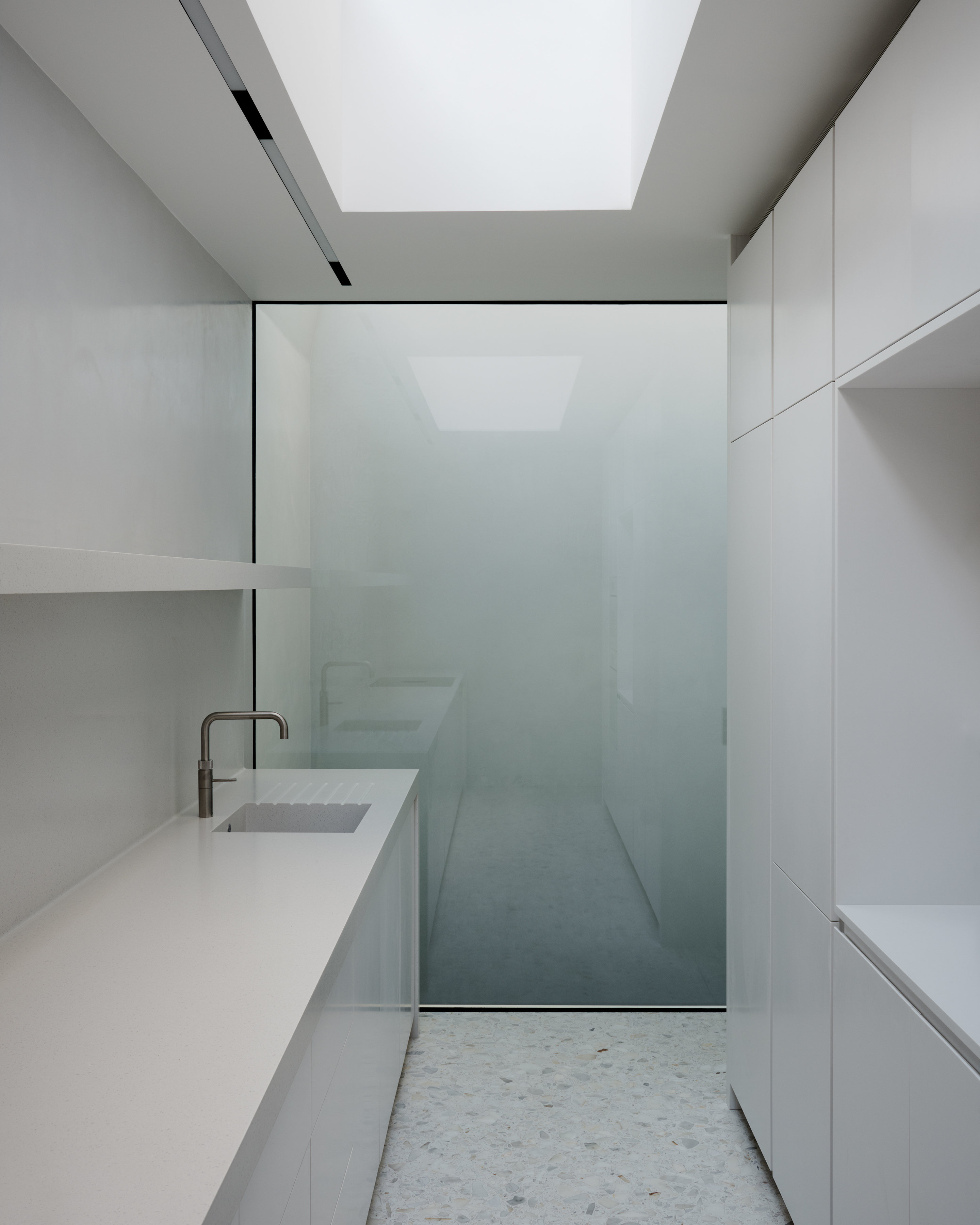
The kitchen at Market Mews by Ampuero Yutronic

Market Mews by Ampuero Yutronic
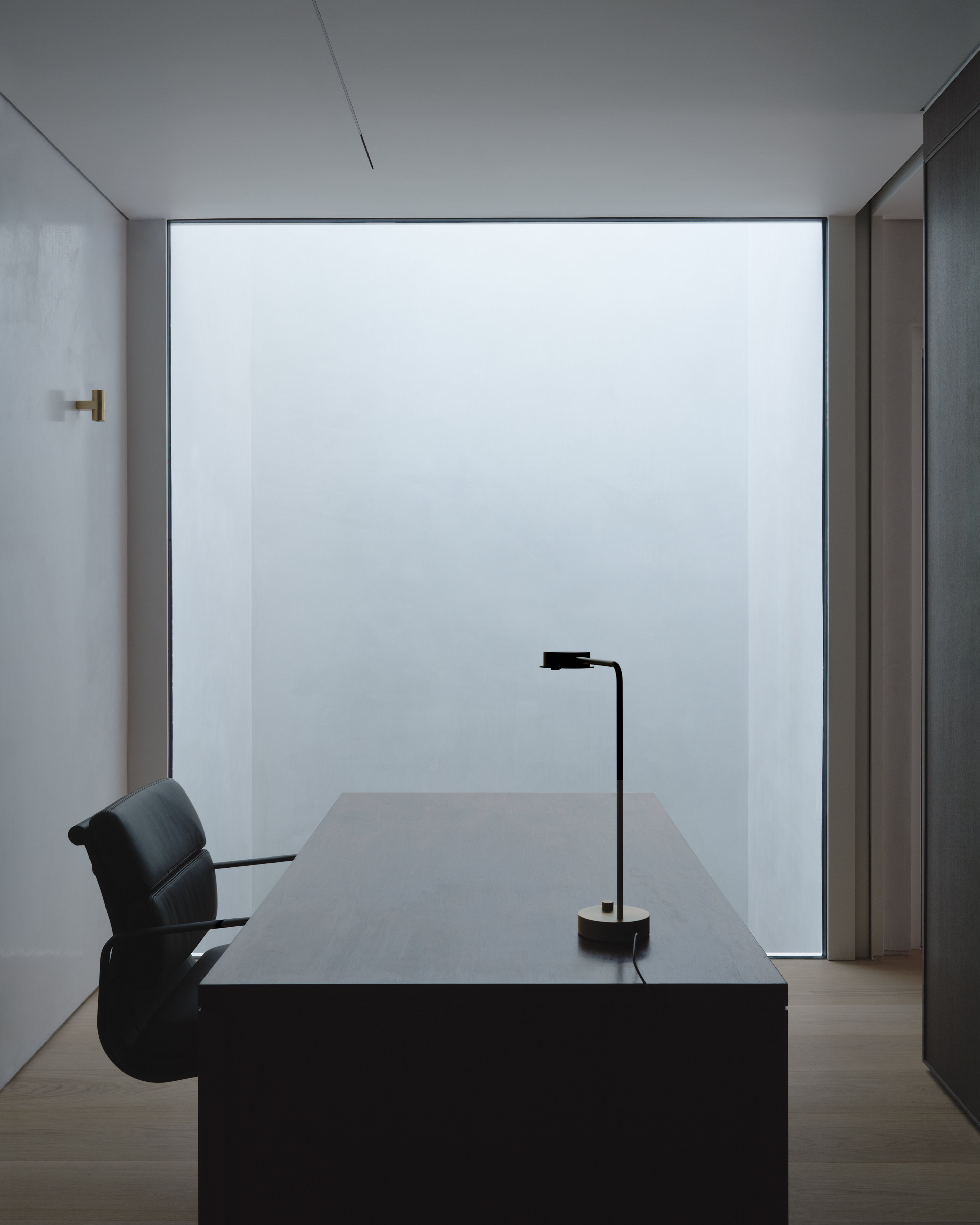
The study, Market Mews by Ampuero Yutronic
Jonathan Bell has written for Wallpaper* magazine since 1999, covering everything from architecture and transport design to books, tech and graphic design. He is now the magazine’s Transport and Technology Editor. Jonathan has written and edited 15 books, including Concept Car Design, 21st Century House, and The New Modern House. He is also the host of Wallpaper’s first podcast.
-
 This LA-based furniture designer finds a rhythm in music and making
This LA-based furniture designer finds a rhythm in music and makingWallpaper* Future Icons: LA-based Ah Um Design Studio's expressive furniture features zig-zagging wooden frames, mohair and boucle upholstery, and a distinctive use of tiles
-
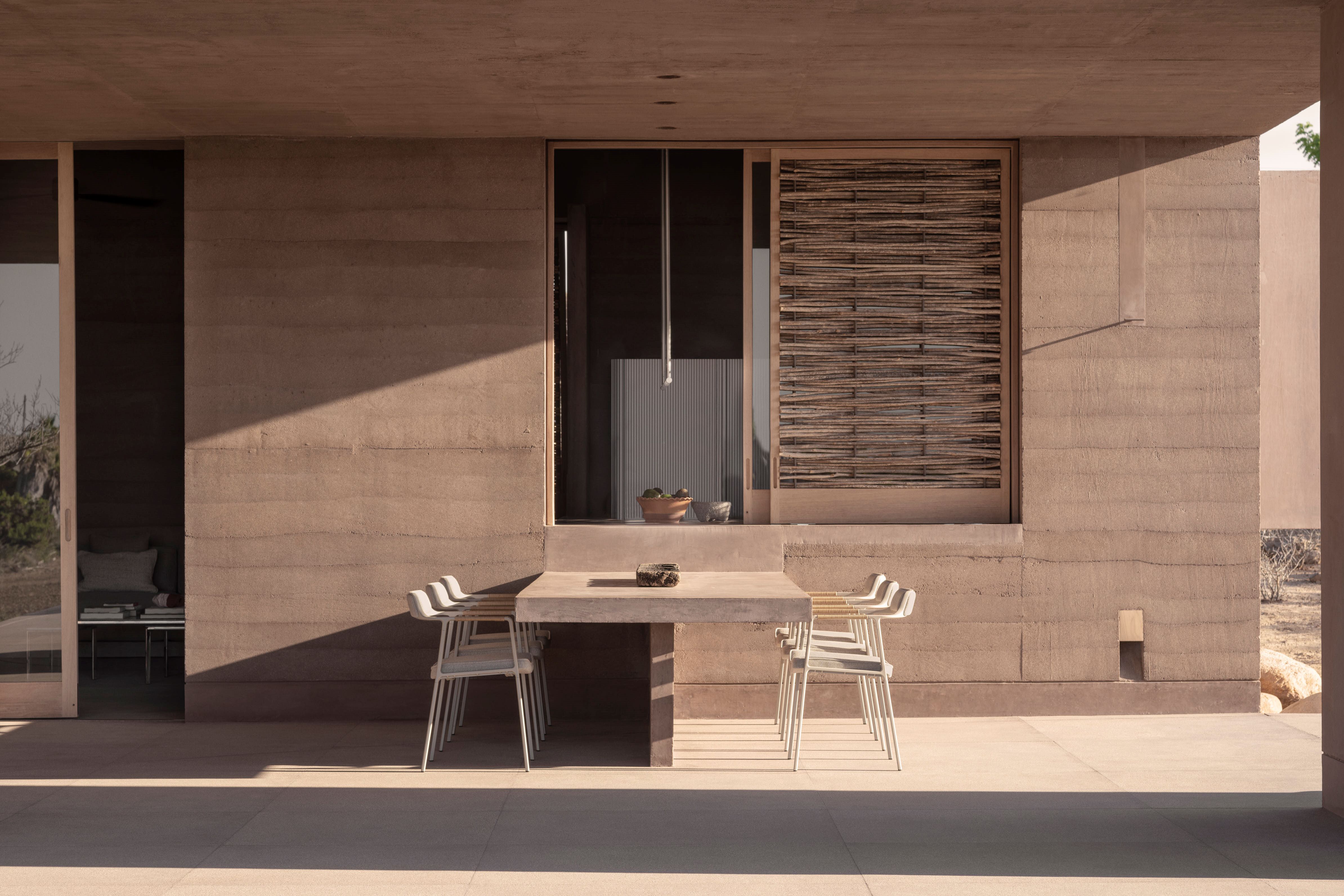 This Mexican architecture studio has a surprising creative process
This Mexican architecture studio has a surprising creative processThe architects at young practice Pérez Palacios Arquitectos Asociados (PPAA) often begin each design by writing out their intentions, ideas and the emotions they want the architecture to evoke
-
 The Bombardier Global 8000 flies faster and higher to make the most of your time in the air
The Bombardier Global 8000 flies faster and higher to make the most of your time in the airA wellness machine with wings: Bombardier’s new Global 8000 isn’t quite a spa in the sky, but the Canadian manufacturer reckons its flagship business jet will give your health a boost
-
 Arbour House is a north London home that lies low but punches high
Arbour House is a north London home that lies low but punches highArbour House by Andrei Saltykov is a low-lying Crouch End home with a striking roof structure that sets it apart
-
 A former agricultural building is transformed into a minimal rural home by Bindloss Dawes
A former agricultural building is transformed into a minimal rural home by Bindloss DawesZero-carbon design meets adaptive re-use in the Tractor Shed, a stripped-back house in a country village by Somerset architects Bindloss Dawes
-
 RIBA House of the Year 2025 is a ‘rare mixture of sensitivity and boldness’
RIBA House of the Year 2025 is a ‘rare mixture of sensitivity and boldness’Topping the list of seven shortlisted homes, Izat Arundell’s Hebridean self-build – named Caochan na Creige – is announced as the RIBA House of the Year 2025
-
 In addition to brutalist buildings, Alison Smithson designed some of the most creative Christmas cards we've seen
In addition to brutalist buildings, Alison Smithson designed some of the most creative Christmas cards we've seenThe architect’s collection of season’s greetings is on show at the Roca London Gallery, just in time for the holidays
-
 In South Wales, a remote coastal farmhouse flaunts its modern revamp, primed for hosting
In South Wales, a remote coastal farmhouse flaunts its modern revamp, primed for hostingA farmhouse perched on the Gower Peninsula, Delfyd Farm reveals its ground-floor refresh by architecture studio Rural Office, which created a cosy home with breathtaking views
-
 A revived public space in Aberdeen is named Scotland’s building of the year
A revived public space in Aberdeen is named Scotland’s building of the yearAberdeen's Union Terrace Gardens by Stallan-Brand Architecture + Design and LDA Design wins the 2025 Andrew Doolan Best Building in Scotland Award
-
 The Architecture Edit: Wallpaper’s houses of the month
The Architecture Edit: Wallpaper’s houses of the monthFrom wineries-turned-music studios to fire-resistant holiday homes, these are the properties that have most impressed the Wallpaper* editors this month
-
 A refreshed 1950s apartment in East London allows for moments of discovery
A refreshed 1950s apartment in East London allows for moments of discoveryWith this 1950s apartment redesign, London-based architects Studio Naama wanted to create a residence which reflects the fun and individual nature of the clients